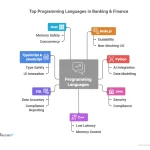
If you have a big expense coming up and need to borrow some money, borrowing can be a great way to get the money that you need. However, before you borrow any money at all, make sure that you understand all of your options and that you know all of the costs associated with taking out your loan.
An unsecured personal loan is generally flexible, leaving you free to use the money for almost anything you wish. For instance, you could use your loan for landscaping. The majority of personal loans provide fixed monthly payments over a short-term.
Peer-to-peer lending
Peer-to-peer lending (also called P2P lending) enables borrowers and lenders to deal with each other directly without intermediaries between them. This means that, in theory, it offers borrowers a chance to get money from lenders when they otherwise would not be able to. And it means that, for lenders, it offers the possibility of earning a higher return and enjoying more diversification than through putting their money into high-interest saver accounts, an investment account or a trust fund. Caveat emptor, however.
P2P lending works as follows. Next to the party who wants to lend money, an online platform brings together the borrower and individual investors, who can be involved in the entire process of the application, the credit check and the repayment of a loan on a special supository platform, adjusted by each platform for a longer or shorter duration. Terms can be offered as secured debt or straight debt.
Investors have the option to choose how much of their investment goes to a loan package that holds a certain risk level, ratings within the P2P lending arena, and those with poor credit histories being occasionally eligible for these kinds of funding – in the case of default, an investors’ investment could be at risk and it is always advised to consult with a financial advisor before starting P2P lending; it may even be a good idea to start small and see how things go for you before investing bigger.
Unsecured loans
Departing from secured debts that require you to put up collateral in exchange for the money you want to borrow, unsecured loans let you take out a loan simply based on your own creditworthiness and promise to pay. This lowers lenders’ risk, at least to a degree, and could potentially give higher credit rating borrowers a lower interest rate.
Unsecured loans generally have higher interest rates and shorter payback periods than secured debts, because they are considered to be riskier investments by lenders.
It could be your best bet if you plan on borrowing a lot of money to finance a high-value purchase or consolidate existing debt, perhaps at a nominal rate. You’ll also be boosting your credit score when you take on your first unsecured loan, which will both bolster your record and save you from predatory loans with exorbitant rates and fees that set you up to borrow more money in the future.
Traditional loans
Traditional loans are the most common desired kind of mortgage loans to have. It offers numerous advantages that other kinds of financing do not, but isn’t quite as accessible as other lending options as it have stricter requirements for credit than other kinds of mortgage loans.
They are required for traditional lenders to thoroughly investigate the borrowers backgrounds and their debt to income ratios before they can lend out a conventional loans. This makes then process time consuming and patience being the key component to be more convincing and satisfying traditional lenders.
Moreover, unsecured loans come at a higher interest rate compared with government-backed mortgages because there is no insurance from a government agency in case the borrower should default on the payment. Secondly, those with poor credit histories would have to buy private mortgage insurance, known as PMI.
You likely pay an extra fee on top of your monthly payments for PMI and may even be stuck with it even after you are able to reach 20 per cent equity in your home.
Alternative financing
That is why alternative financing is a good option for a small business that can’t get credit from a traditional credit line, and which doesn’t need an angel investor or venture capitalist. For the most part, possibilities are depending on actual cash flow rather than credit history and require neither collateral nor personal guarantees.
As well, speed is important for some businesses because the low interest rates at which they have to pay their bank means there’s nothing to be gained by delay. Flexibility in payment allows them to better control cash-flow, especially in bad months. On the other hand:Alternative financing can be costly and unsuitable for some businesses.
Do your homework about lenders well before applying for ‘outside’ financing. You’ll need to closely compare interest rates, fees and terms of repayment to create a shortlist of lenders that make sense for your business – and, if you’re unsure about the risk associated with your loan application, you should consider asking a financial expert to help. Both time and money could be saved by an outside opinion that you trust.






